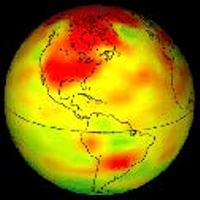Aug 2 2013
Researchers reviewed the likelihood of continued changes to the terrestrial climate, including an analysis of a collection of 27 climate models. If emissions of heat-trapping gases continue along the recent trajectory, 21st century mean annual global warming could exceed 3.6 °F ( 2 °C) over most terrestrial regions during 2046 to 2065 and 7.2 °F (4 °C) during 2081-2100. If warming occurs at this pace, it will probably be the most rapid large climate change in the last 65 million years.

The review, published in the August 2 issue of Science, was conducted by Stanford University’s Noah Diffenbaugh and the director of the Carnegie Institution’s Department of Global Ecology Chris Field.
“With a high scenario for future greenhouse gas emissions, the largest warming occurs over the high latitudes of the Northern Hemisphere, but all land areas warm dramatically,” remarked Field. The scientists used the Coupled Model Intercomparison Phase 5 (CMIP5), which includes results from 27 different models. They reviewed information about the aspects of climate change that drive biological response; a comparison of current and future climate change with the past, including the rate and magnitude of the change; and the context in which the change is occurring. Results in the CMIP5 archive reflect the current state of understanding about the way the physics of the atmosphere and oceans respond to changes in concentrations of greenhouse gases released by human activity.
The researchers emphasize that there are numerous uncertainties about the magnitude of future climate change, such as energy feedbacks from clouds and the carbon cycle. The largest uncertainty is the level of greenhouse gas emissions from future human activity. Despite these uncertainties several existing conditions, especially ongoing demand for fossil fuels, makes some future climate change a certainty.
“What is perhaps most noteworthy is the rate of change,” remarked Diffenbaugh. “For instance, the rapid global warming event that occurred some 55 million years ago was as large as these warming projections, but that event occurred over many thousands of years, not a mere century.”
The duo emphasized that the rate of change will ultimately by determined by human decisions and innovations regarding greenhouse gas emissions. “The future of the planet lies in our hands,” said Field.